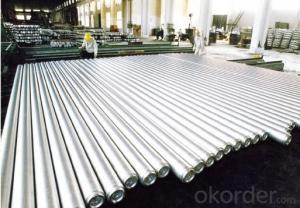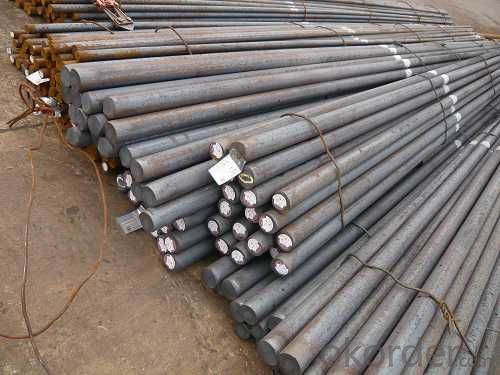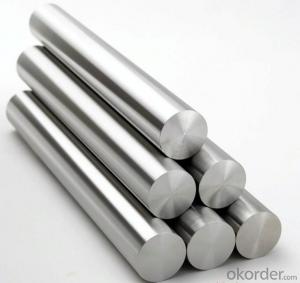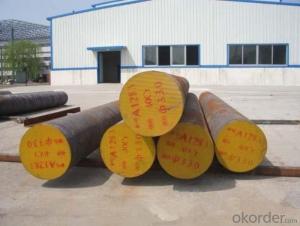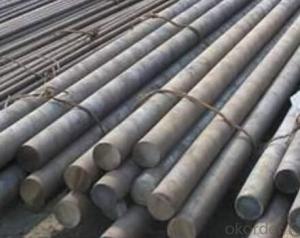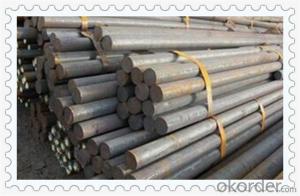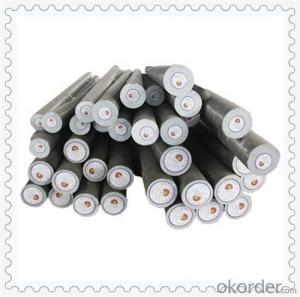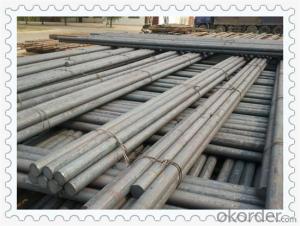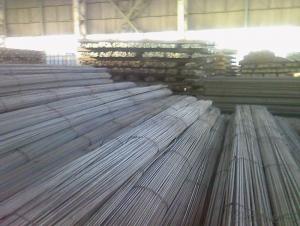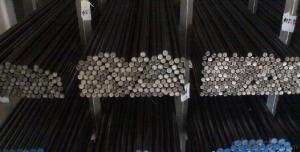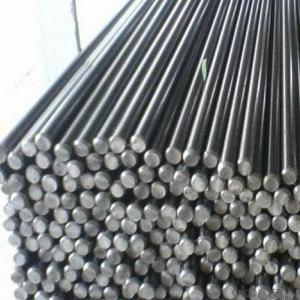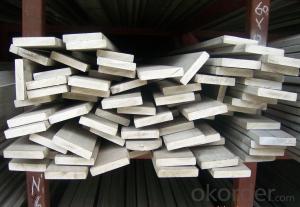Spring Steel 65Si2MnA
- Loading Port:
- China Main Port
- Payment Terms:
- TT OR LC
- Min Order Qty:
- -
- Supply Capability:
- -
OKorder Service Pledge
Quality Product, Order Online Tracking, Timely Delivery
OKorder Financial Service
Credit Rating, Credit Services, Credit Purchasing
You Might Also Like
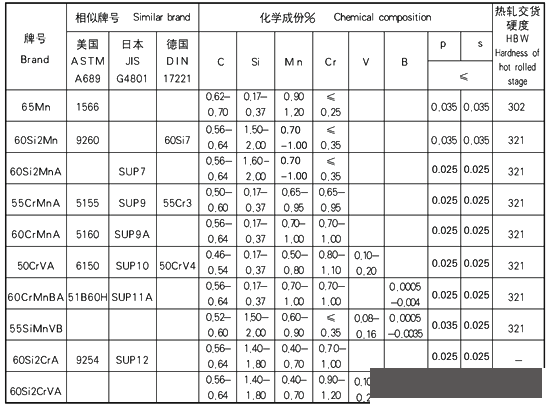
- Q: How do you calculate the shear strength of a steel round bar?
- The shear strength of a steel round bar can be calculated by using the formula: Shear Strength = 0.6 * Ultimate Tensile Strength Where the Ultimate Tensile Strength is the maximum stress a material can withstand before failure.
- Q: Can steel round bars be heat treated to improve their mechanical properties?
- Yes, steel round bars can be heat treated to improve their mechanical properties. Heat treatment involves heating the steel to a specific temperature and then cooling it at a controlled rate. This process can alter the microstructure of the steel, resulting in improved hardness, strength, and toughness. Different heat treatment methods, such as quenching and tempering, can be applied depending on the desired mechanical properties.
- Q: How do steel round bars compare to other materials like aluminum or stainless steel?
- Steel round bars possess numerous advantages over alternative materials such as aluminum or stainless steel. Firstly, their exceptional strength and durability are widely acknowledged. With a high tensile strength, they are capable of enduring heavy loads and extreme conditions, making them ideal for construction, manufacturing, and engineering applications where strength and resilience are vital. When compared to aluminum, steel round bars exhibit superior strength and hardness. Although aluminum is lightweight, it lacks the same level of strength as steel, which can restrict its use in certain applications. Furthermore, steel round bars offer increased resistance to impact and abrasion, making them more suitable for heavy-duty applications that necessitate resistance to wear and tear. Regarding stainless steel, it is essential to note that it is an alloy that primarily contains steel. Stainless steel is renowned for its corrosion resistance, making it an excellent choice for applications exposed to moisture or harsh environments. However, stainless steel does not possess the same strength as steel round bars. Steel round bars excel in carrying heavier loads and providing superior structural integrity. Another crucial aspect to consider is the cost-effectiveness of steel round bars compared to aluminum or stainless steel. Generally, steel is more affordable than stainless steel and aluminum, making it a popular choice across a broad range of applications. Additionally, steel round bars are readily available in various sizes and grades, offering versatility and ease of use. In conclusion, steel round bars outperform alternative materials like aluminum or stainless steel in terms of strength, durability, and cost-effectiveness. However, the ultimate choice of material depends on the specific requirements of the application and the desired properties necessary for the project.
- Q: What is the modulus of elasticity of a steel round bar?
- The modulus of elasticity of a steel round bar typically ranges from 190 to 210 gigapascals (GPa).
- Q: What is the elongation of a steel round bar?
- When a tensile force is applied to a steel round bar, its elongation occurs, which is the extent to which it stretches or deforms. This elongation indicates the bar's capacity to endure tension and is commonly stated as a percentage of its original length. The elongation is influenced by various properties of the steel, including its composition, grain structure, and heat treatment. Additionally, factors such as the applied force, temperature, and loading speed impact the elongation. Steel round bars typically demonstrate considerable elongation before reaching their breaking point, which renders them suitable for structural applications demanding both strength and ductility.
- Q: What are the advantages of using zinc-alloy steel round bars?
- Zinc-alloy steel round bars offer numerous benefits: 1. Enhanced corrosion resistance: The application of a zinc layer to these bars forms a protective barrier against corrosion, ensuring longevity and durability. As a result, they are highly resistant to rust and other types of corrosion. 2. Increased strength and durability: Zinc-alloy steel is renowned for its exceptional strength and durability. The zinc coating strengthens the steel's structure, enabling it to withstand heavy loads and high-stress conditions. Consequently, zinc-alloy steel round bars are ideal for applications that require reliability and strength. 3. Cost-effective solution: Compared to other materials that resist corrosion, zinc-alloy steel round bars are a cost-effective option. The zinc coating provides a more affordable alternative to pricey metals like stainless steel, offering comparable corrosion resistance and strength. 4. Versatility and ease of fabrication: Zinc-alloy steel round bars are incredibly versatile as they can be easily shaped and resized to suit various applications. They can be cut, bent, welded, and machined to meet specific requirements, making them suitable for use in the construction, automotive, industrial, and other sectors. 5. Aesthetically pleasing: The shiny and smooth zinc coating of zinc-alloy steel round bars enhances their visual appeal. Consequently, they are well-suited for applications where aesthetics play a crucial role, such as architectural designs or decorative elements. 6. Environmental sustainability: Zinc is a highly recyclable material, and the utilization of zinc-alloy steel round bars promotes environmental sustainability. By recycling these bars at the end of their lifespan, the demand for new raw materials is reduced, thereby minimizing waste generation. In conclusion, zinc-alloy steel round bars offer a range of advantages, including corrosion resistance, strength, cost-effectiveness, versatility, aesthetic appeal, and environmental sustainability. These qualities make them highly desirable for diverse industries and applications.
- Q: What are the different surface hardness options for steel round bars?
- The different surface hardness options for steel round bars depend on the specific heat treatment processes used. Common options include annealing for softening the steel and improving machinability, normalizing for uniform grain structure and increased strength, quenching and tempering for achieving high hardness and toughness, and case hardening techniques like carburizing or nitriding to create a hard outer layer while maintaining a softer core.
- Q: Can steel round bars be used for making kitchen utensils?
- Kitchen utensils can indeed be made using steel round bars. Steel, being a robust and long-lasting material, is frequently employed in the manufacturing of kitchen utensils because of its ability to withstand corrosion, heat, and chemical harm. By effortlessly shaping and molding steel round bars, they can be transformed into a variety of utensils like spoons, forks, knives, and ladles. Moreover, steel utensils are non-reactive, ensuring that they do not release any harmful substances into food, thereby offering a safe option for cooking and food preparation.
- Q: Why is round steel more expensive than thread steel?
- Round steel has a wide range of applications, many brands and different uses. Such as machining, shipbuilding and other user processing requirements are also different. Such as alloy round steel, Q345B, high carbon steel, 45#, 35#, general round Q235B, mainly material, ingredients, etc..
- Q: Is round bar steel?
- For example, the steel structure material is Q235B, and the steel bar is HPB235. Although the strength is the same, the production process is still different, the requirements of higher steel bar, there is a new specification more stringent.
Send your message to us
Spring Steel 65Si2MnA
- Loading Port:
- China Main Port
- Payment Terms:
- TT OR LC
- Min Order Qty:
- -
- Supply Capability:
- -
OKorder Service Pledge
Quality Product, Order Online Tracking, Timely Delivery
OKorder Financial Service
Credit Rating, Credit Services, Credit Purchasing
Similar products
Hot products
Hot Searches
Related keywords
